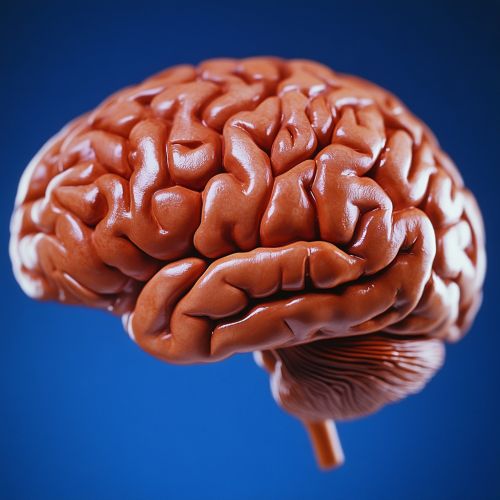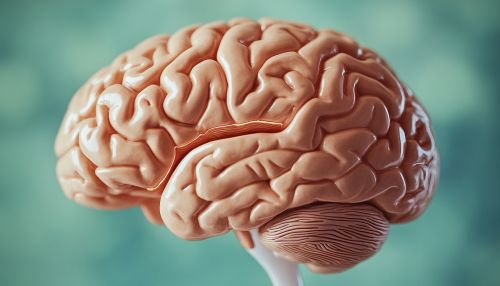Dorsolateral prefrontal cortex
Introduction
The dorsolateral prefrontal cortex (DLPFC) is a critical region of the prefrontal cortex located in the frontal lobe of the brain. It plays a pivotal role in executive functions, including working memory, cognitive flexibility, planning, inhibition, and abstract reasoning. The DLPFC is involved in the integration of sensory and mnemonic information and the regulation of intellectual function and action. This article delves into the anatomy, function, and clinical significance of the dorsolateral prefrontal cortex, providing a comprehensive overview of its role in human cognition and behavior.
Anatomy and Structure
The dorsolateral prefrontal cortex is situated in the middle frontal gyrus of the frontal lobe, encompassing Brodmann areas 9 and 46. It is bounded by the ventrolateral prefrontal cortex and the orbitofrontal cortex, with connections extending to the parietal cortex, temporal cortex, and limbic system. The DLPFC is characterized by its dense network of pyramidal neurons and extensive white matter tracts, which facilitate communication with other cortical and subcortical regions.


The cytoarchitecture of the DLPFC is marked by a well-developed granular layer IV, which is indicative of its role in higher-order processing. The region's connectivity is integral to its function, with afferent and efferent projections linking it to the thalamus, basal ganglia, and hippocampus. These connections enable the DLPFC to modulate attention, memory, and decision-making processes.
Functions
The dorsolateral prefrontal cortex is instrumental in executive functions, a set of cognitive processes necessary for the cognitive control of behavior. These include:
Working Memory
The DLPFC is crucial for working memory, the ability to hold and manipulate information over short periods. It supports the maintenance and updating of information, allowing for complex cognitive tasks such as problem-solving and reasoning. The DLPFC interacts with the parietal cortex to sustain attention and manage the flow of information.
Cognitive Flexibility
Cognitive flexibility, the capacity to adapt behavior in response to changing environments, is heavily reliant on the DLPFC. This region supports the ability to shift between tasks or mental sets, a function that is essential for adaptive behavior and learning. The DLPFC's role in cognitive flexibility is evident in its involvement in tasks that require the suppression of habitual responses in favor of novel strategies.
Planning and Decision-Making
The DLPFC is involved in planning and decision-making, processes that require the evaluation of options and the anticipation of future outcomes. This region integrates information from various sensory modalities and memory systems to guide goal-directed behavior. The DLPFC's role in decision-making is particularly evident in tasks that involve weighing risks and benefits, as well as in moral and ethical reasoning.
Inhibition and Self-Control
Inhibition, the ability to suppress inappropriate or unwanted actions, is another key function of the DLPFC. This region is involved in the regulation of impulsive behavior and the maintenance of self-control. The DLPFC's inhibitory control is crucial for social interactions and adherence to societal norms.
Clinical Significance
The dorsolateral prefrontal cortex is implicated in a variety of neuropsychiatric disorders, including schizophrenia, depression, and attention deficit hyperactivity disorder (ADHD). Dysfunction in the DLPFC can lead to impairments in executive functions, manifesting as difficulties in planning, decision-making, and impulse control.
Schizophrenia
In schizophrenia, the DLPFC is often characterized by reduced activity and connectivity, contributing to cognitive deficits observed in the disorder. These deficits include impairments in working memory, attention, and executive function, which are central to the pathophysiology of schizophrenia.
Depression
The DLPFC is also implicated in depression, where it exhibits altered activity patterns. Hypoactivity in the DLPFC is associated with deficits in cognitive control and negative bias in information processing, contributing to the persistence of depressive symptoms.
ADHD
In ADHD, the DLPFC is involved in the regulation of attention and inhibitory control. Dysfunction in this region can lead to difficulties in sustaining attention and controlling impulsive behaviors, which are hallmark symptoms of ADHD.
Research and Future Directions
Ongoing research into the dorsolateral prefrontal cortex is focused on elucidating its precise role in cognitive processes and its involvement in neuropsychiatric disorders. Advances in neuroimaging techniques, such as functional MRI and diffusion tensor imaging, have enhanced our understanding of the DLPFC's connectivity and function.
Future research aims to explore the potential of targeted interventions, such as transcranial magnetic stimulation (TMS) and cognitive behavioral therapy (CBT), to modulate DLPFC activity and improve cognitive function in clinical populations. These interventions hold promise for the development of novel therapeutic strategies for disorders involving DLPFC dysfunction.
